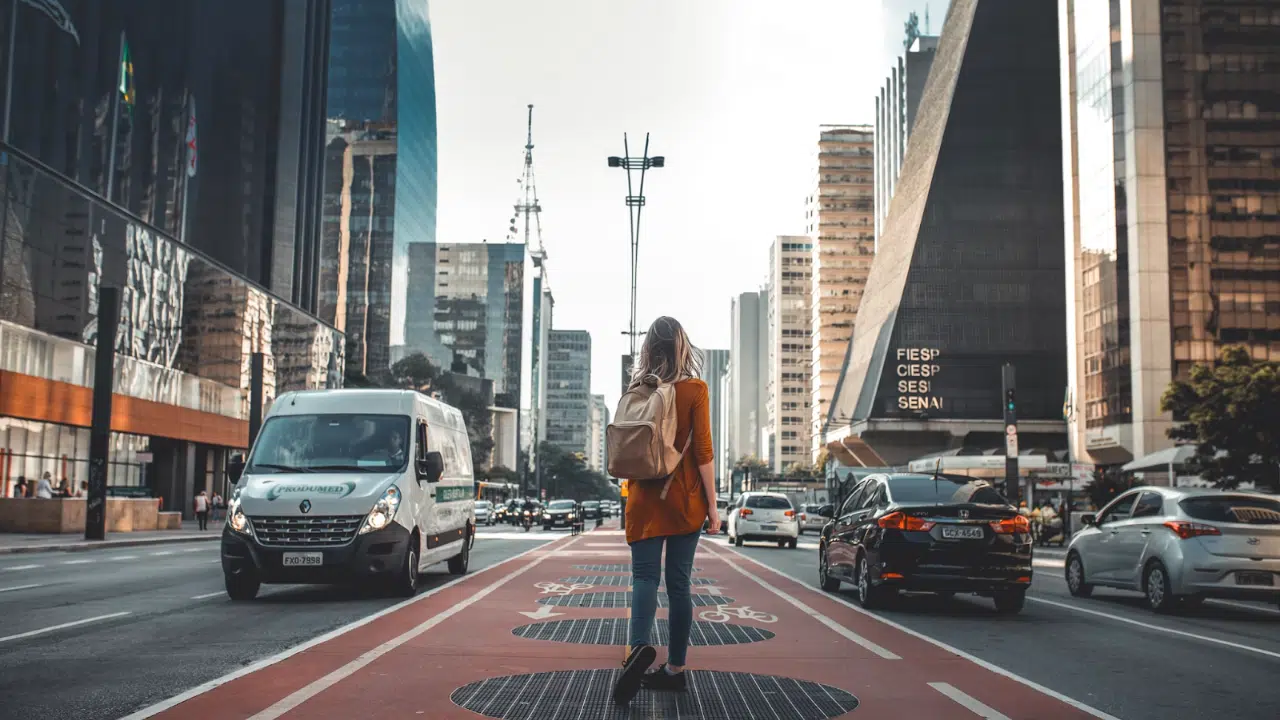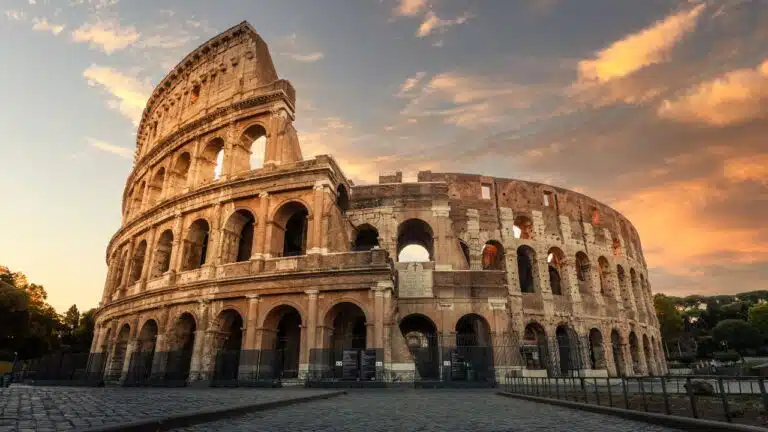Travelers love discovering new global destinations, but some cities present navigational challenges that have baffled even the savviest explorers. In a world with Google Maps at our fingertips, getting lost may seem like a nonissue. That is, of course, until you find yourself disoriented in an unfamiliar place without phone service.
While getting lost can certainly be nerve-racking, some might argue that these unexpected adventures are the ones that teach us the most about a destination—and result in some of the best travel stories.
Whether the thought of getting lost in unknown destinations is exhilarating or terrifying, it happens more frequently than you may think.
At Next Vacay, we’ve discovered the most confusing cities to navigate based on Google searches for directions, exact location, and Google Maps on each destination. We’ve also looked into the median mobile download speed, walkability score, average taxi fares, and transportation options to discover where people get lost the most and how they get unlost.
So, regardless if you need advice on which places require the most planning in advance, or just love a good list, here are the world’s most challenging cities to navigate.
Table of Contents
- Top 15 Hardest Cities To Navigate
- 1. Toronto
- 2. London
- 3. Mexico City
- 4. New York
- 5. Paris
- 6. São Paulo
- 7. Madrid
- 8. Hong Kong
- Top Tips For Navigating A New City
- Methodology
- Sources
Top 15 Hardest Cities to Navigate
1. Toronto is the hardest city to navigate
Canada’s largest city offers travelers the perfect mix of attractions, from galleries and museums to parks and music festivals. The city’s multicultural food scene alone makes Toronto one of the world’s most desirable destinations.
But that doesn’t mean it’s easy to navigate.
Approximately 3.9 million people search for directions in Toronto every month. And while driving in the city isn’t terrible, it’s incredibly challenging. As a boomtown, there’s always new construction happening everywhere, so if you’re driving around the downtown area, you can expect traffic disruptions, congestion, and road closures that could suddenly change your route and potentially get you lost.
The city is perhaps best explored on foot or by taking advantage of one of North America’s finest public transportation systems. With an average walkability score of 61/100, you can see why the city made it to the top of our list. However, if you get lost in Toronto on your next trip, you may be glad to know that the city has an outstanding median mobile download speed of 94 Mbps—so no matter where you end up, you can always ask Google for help.
2. London is the second most confusing city in the world
Whether you’re looking for famous sights or diverse cultural scenes with museums, sporting events, and nightlife, London is everything you dream of in a vacation destination.
But navigating your way around a city as big, busy, and expensive as London can be challenging.
Some roads—perhaps thousands of years old and mapped long before cars were invented—are confusing to navigate. On top of that, the city’s winding and narrow streets can disorient even the savviest explorers. Traffic is heavy, and you have to contend with left-side driving, which can also take time to get used to. And while those iconic red buses offer great views, they can be slow due to traffic jams and dozens of commuters getting on and off at every stop.
With 1.5 million people searching for directions in London every month, you can see why the British capital is number two on our list. However, with good mapping, a great mobile connection of 74 Mbps on average, and a bit of patience, there’s no reason why you can’t get around the city via public transport.
3. Mexico City is the third most difficult city to navigate
With top-notch street food, world-class architecture, and electrifying nightlife, Mexico City is one of the liveliest places on earth—not to mention one of the most affordable vacation destinations.
But navigating your way around Mexico’s largest city is no easy feat.
Around 1.2 million people search for directions in Mexico City every month. The city is enormous, streets often get congested, and certain traffic rules might be hard to understand—so it’s pretty easy to get lost.
Public transport in Mexico is ridiculously inexpensive but can also be daunting or confusing if you don’t speak Spanish. Nevertheless, the subway offers a smooth ride for one of the lowest fares anywhere in the world (around 25 cents); just keep track of where you want to get off as there are no announcements on the train. Taxis and ride-sharing apps like Uber are also safe and affordable ways to move around.
With a solid mobile download speed of 49 Mbps on average and the help of Google Maps, don’t let the fear of getting lost keep you from exploring this cultural gem.
4. New York is no picnic to get around
New York City offers travelers endless possibilities, from a plethora of nightlife attractions and iconic landmarks to the most exclusive theater in the world. With over 1 million searches for directions every month, you can see how many find one of the biggest metropolises in the world a challenge to navigate.
The Big Apple has an impressive walkability score of 88/100, but it can be crowded and intimidating. While the city is built on a grid that makes it generally easy to navigate, several areas, including popular destinations, such as SoHo, Wall Street, and Chinatown (Canal Street), were all developed before the grid—making it easy for even local New Yorkers to get lost when traveling south of Houston Street.
The subway is the most efficient and affordable way of getting around. Though it may seem daunting initially, the +100-year-old system will take you to almost every corner of the city. Still, it is prone to delays or reroutes that can affect your itinerary.
The good news: the city offers an excellent median mobile download speed of 93 Mbps, which makes rerouting a breeze.
5. Paris is the world’s fifth hardest city to navigate
Paris has a place on pretty much every traveler’s bucket list, and it’s not hard to see why. From iconic landmarks and world-famous museums to charming cafés, there’s something for everyone to enjoy.
But getting around the City of Light may be baffling for some travelers, as a challenging language can make for an overwhelming experience. Although you don’t need to be fluent in French to communicate with Parisians, learning a few words is highly recommended. The city layout is tricky, traffic is often heavy, and finding on-street parking can be taxing. Furthermore, the pedestrian-only zones and numerous roundabouts can make driving around the center of Paris quite confusing. Still, it’s one of the most-walked cities worldwide, though the Metro is the preferred way of getting around as it’s fast, affordable, and covers most city center attractions.
Over 1 million people search for directions in Paris every month, so it’s clear that some are finding France’s capital hard to navigate. However, an excellent mobile download speed of 68 Mbps on average means you can always ask Siri for help.
6. São Paulo might be a trial to traverse
Known as the most cosmopolitan city in South America, São Paulo is a must-visit destination to add to your bucket list. From its peaceful beaches and famous nightlife to its rich culture and unique cuisine, travelers always find something to suit everyone’s tastes.
This Brazilian city is an underrated vacation spot, but it can be a challenge to navigate for some travelers. Driving in the city as a tourist can prove a stressful endeavor. São Paulo is known for its long traffic jams. And you may need to brush up on Brazilian road signs before your trip because most street signs are in Portuguese. The unfamiliar language makes getting stuck or lost while trying to get to your destination all the more likely. Over 1 million people search for directions in São Paulo every month.
The Metro is efficient and, by far, the best way to get around, but it’s not extensive enough to cover all attractions. Traveling São Paulo at night, it’s safest to take an Uber or taxi to and from your destination. That said, Brazilians are known to be warm, friendly people. So if you get lost, you can always ask a local for help or search online for directions as the city has a decent median mobile download speed of 26 Mbps.
7. Madrid ranks as the seventh hardest city to navigate
Travelers can find any number of reasons to put Madrid on their bucket list of vacation destinations. From its stunning architecture and world-renowned museums to its vibrant tapas scene, this European city is truly an underrated gem. But for some travelers, it can prove tricky to navigate.
Over 800,000 people search for directions in Madrid every month. While renting a car usually offers tremendous flexibility, in Madrid, it’s not always the best idea. The city layouts can be complex, traffic is often heavy, and parking can be hard to find. The Metro is one of the largest metropolitan networks in Europe and the fastest, most efficient, and most reliable way of getting around Madrid. However, some travelers find the metro scheme extremely complicated—the numerous transitions are confusing, and you’ll often have to make one or even two transfers to overcome a relatively short distance.
So if you’re not extremely careful of the signs, you could easily get lost. However, with a standard mobile download speed of 43 Mbps, getting your bearings and moving around the city should be a relatively smooth and pleasant experience.
8. Hong Kong is among the most complex places to navigate in the world
Hong Kong is a destination that everyone should visit at least once in their lifetime. It has an outstanding culinary scene and is known as a shopper’s paradise. But getting lost is always a possibility as the city isn’t the easiest to navigate.
Over 600,000 people search for directions in Hong Kong every month. Buses are often crowded and challenging for travelers who don’t speak Cantonese. However, the city is one of the most walkable urban centers on the planet and the Metro, known as the MTR, is one of the fastest, most efficient, and most affordable ways to get around.
Of course, it’s not a guarantee you won’t get lost on the MTR as you’re getting used to it, so try not to miss your stop. Taxis are cheap and reliable but don’t expect all taxi drivers to speak English. Instead, keep Google Maps and a Cantonese translation app handy. With a decent mobile download speed of 47 Mbps on average, communicating and getting where you need to be will be fairly easy.
Top Tips for Navigating a New City
Exploring a new destination is usually one of life’s best experiences. But if the place you’re visiting is tough to navigate, you’ll want to plan your trip accordingly and come prepared for every eventuality.
Here are some tips on how to ease worries and avoid getting lost while visiting a new city.
1. Always carry a map.
Yes, we all have Google Maps on our smartphones. But, the internet connection at your destination isn’t always guaranteed. It may be unreliable or spotty, especially if you’re traveling to a remote location. So, make sure to carry an old-school physical map with you or download the map of your destination city before arriving.
2. Plan your route in advance.
One of the best ways to avoid getting lost in an unknown destination is to research places thoroughly and plan your route in advance. Know each landmark and tourist spot you want to visit and understand the best and most reliable way of getting around. If you’re traveling with friends or family, make a plan in case someone gets lost. Not only will this reduce your anxiety, but it’ll make for a more efficient and enjoyable trip.
3. Learn the lingo or key phrases.
Learning keywords and phrases in the local language of the places you plan to visit can be a lifesaver when traveling abroad. For example, you might get lost and need to ask someone for directions or communicate with local authorities and get assistance if an emergency occurs. Words such as ‘where is,’ ‘bus,’ ‘food,’ ‘hotel,’ ‘taxi,’ ‘help,’ and ‘police’ are good to learn if your primary concern is getting lost.
4. Memorize your hotel address.
It’s always a good idea to memorize your hotel address and write it down using paper and your phone. And if remembering addresses isn’t your thing, or you don’t speak the local language, make sure to grab a business card at the hotel’s front desk. Then, if you get lost, you can ask people to help you get back to your hotel or show a taxi driver where you need to go.
5. Be prepared for the worst.
One of the best ways to prevent getting lost is to prepare for multiple scenarios. Taking photos or videos and using Google Maps can drain your battery fast, so carrying a phone charger or external battery is always recommended when traveling. If you’re going solo, let someone know your itinerary. Always have cash, as some transportation services might not take credit cards. And finally, know the location of your embassy, as this may come in handy for worst-case scenarios.
Planning your next vacation?
Whether you have your sights set on one of these destinations or want to tick other places off your travel bucket list, we have thousands of incredible flight deals at Next Vacay. If you want to stay in the loop and know about the cheapest flights in the world, sign up for our newsletter to get exclusive deals you won’t find anywhere else.
Methodology
Utilizing the Global City Power Index by The Mori Memorial Foundation, we established an initial list of the top 60 capitals in the world. From this list, and using Keyword Tool, we analyzed Google search volumes for “directions in [name of the city].” We then analyzed search volumes for “where am I right now,” “where am I now,” “where am I at right now,” and “where am I right now exact address” to measure the number of people who get lost at each destination. We also looked at Google search volumes for “Google Maps” on each destination. Adding the search volumes for all terms, we then created a unique total value per city and ranked the most complex cities to navigate. Using WalkScore.com, we analyzed the walkability score of every location to understand how easy it would be to navigate on foot. Walk Score analyzes hundreds of walking routes to nearby amenities. Points are awarded based on the distance to amenities in each category. Amenities within a 5-minute walk (.25 miles) are given maximum points. A decay function is used to give points to more distant amenities, with no points given after a 30-minute walk. Using Numbeo, we analyzed the average median taxi fare in each city within a 5-mile distance to understand how easy and affordable it would be to get around if you got lost in a foreign destination. Rates were then converted from local currency to USD dollars. Utilizing the Speedtest Global Index, we found each destination’s Median Mobile download speed (Mbps) to understand how easy it would be to search for directions if you got lost. Sites that had no data provided for admissions were omitted. Data is correct as of July 11th, 2022.
Sources
| Metric | Source | Outline | |
| 1 | Capitals cities in the world | https://mori-m-foundation.or.jp/english/ius2/gpci2/index.shtml | An initial list of the top 60 capitals in the world |
| 2 | Walkability Score | https://www.redfin.com/how-walk-score-works | Walk Score analyzes hundreds of walking routes to nearby amenities. Points are awarded based on the distance to amenities in each category. Amenities within a 5-minute walk (.25 miles) are given maximum points. A decay function is used to give points to more distant amenities, with no points given after a 30-minute walk. Walk Score also measures pedestrian friendliness by analyzing population density and road metrics such as block length and intersection density. Data sources include Google, Factual, Great Schools, Open Street Map, the U.S. Census, Localeze, and places added by the Walk Score user community. 90–100: Walker’s Paradise – Daily errands do not require a car. 70–89: Very Walkable – Most errands can be accomplished on foot. 50–69: Somewhat Walkable – Some errands can be accomplished on foot. 25–49: Car-Dependent – Most errands require a car. 0–24: Car-Dependent – Almost all errands require a car. |
| 3 | Median Mobile Download Speed (Mbps) | https://www.speedtest.net/global-index | Speedtest Global Index rankings are based on median download speed to best reflect the speeds a user is likely to achieve in a market. |
| 4 | Median Taxi Fare | https://www.numbeo.com/taxi-fare/ | Numbeo analyzes median taxi fare within a 5-mile distance. Numbeo allows you to see, share and compare information about taxi fares worldwide and gives an estimation of money needed for a journey. It allows an estimation of a fare between two arbitrary addresses (when the underlying mapping engine knows about those addresses, which is the case for most cities in the developed world). |



